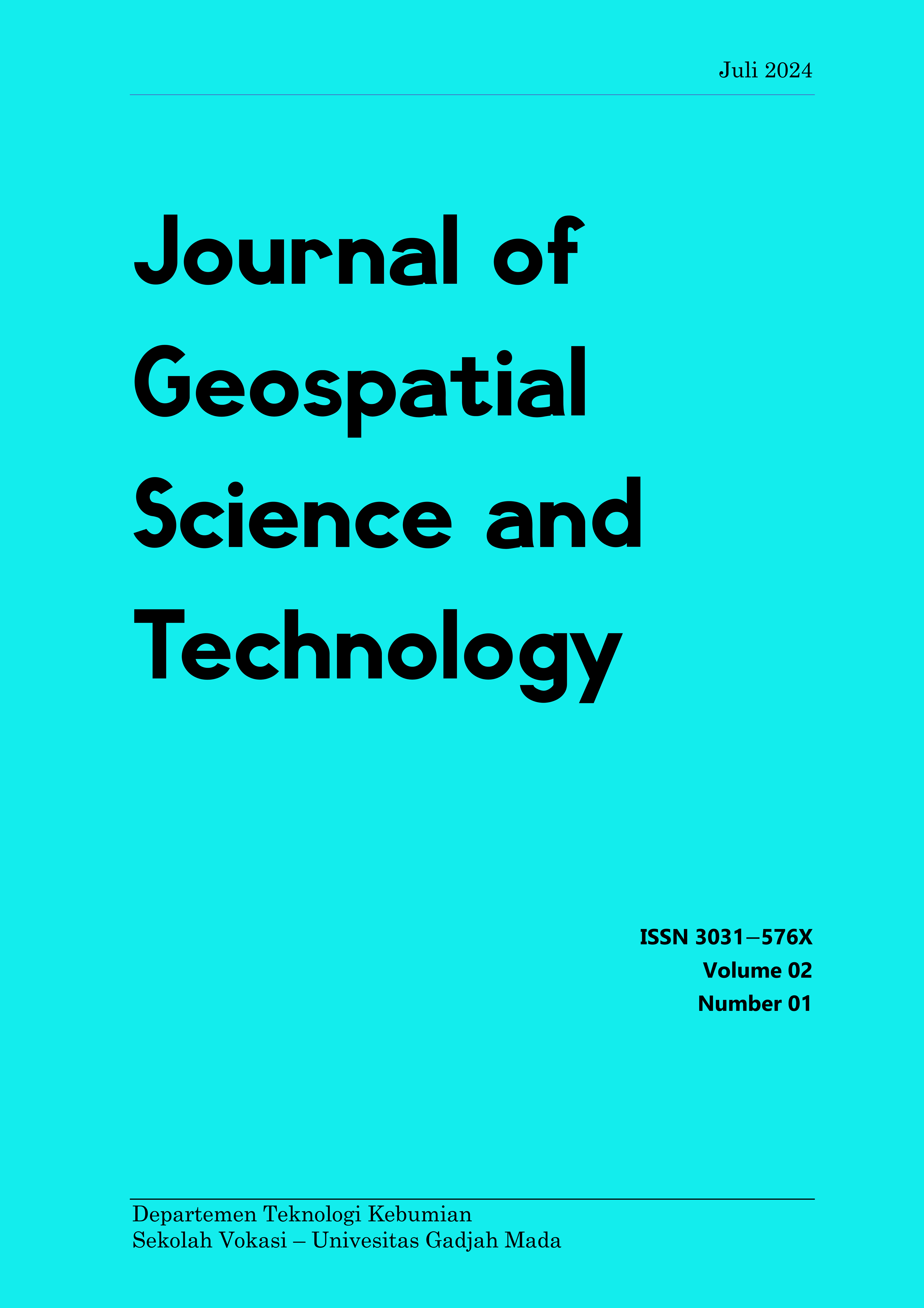Pemanfaatan Data Pengukuran Mobile Laser Scanner untuk Analisis Perubahan Elevasi Ruas Tol
Abstract
Pembangunan jalan tol di Indonesia yang semakin pesat di Indonesia perlu diimbangi monitoring yang baik. Salah satu metode yang dapat dimanfaatkan untuk monitoring jalan tol adalah metode Mobile Laser Scanner (MLS) yang cukup efisien, salah satunya untuk monitoring elevasi jalan tol. Penelitian ini menggunakan data MLS Ruas Tol Terbanggi Besar Pematang Panggang Kayu Agung (TBPPKA) STA 27+500 s.d. STA 30+212 yang diambil pada tahun 2020 dan 2021 yang diolah menggunakan perangkat lunak Global Mapper dengan metode subtract surface untuk mengetahui nilai perubahan elevasinya. Hasil dari penelitian ini ditemukan adanya perubahan elevasi ruas tol TBPPKA dari tahun 2020 ke 2021 di Track A sebesar -0,017 m s.d. 0,022 m dan di Track B sebesar -0,025 m s.d. 0,019 m.
The rapid development of toll roads in Indonesia must be balanced with good monitoring. One method that can be used for toll road monitoring is the Mobile Laser Scanner (MLS) method, which is quite efficient for monitoring toll road elevation. This study uses MLS data for the Terbanggi Besar Pematang Panggang Kayu Agung Toll Road (TBPPKA) STA 27+500 to STA 30+212 taken in 2020 and 2021, which is processed using Global Mapper software with the subtract surface method to determine the value of elevation changes. The results of this study found that there was a change in the elevation of the TBPPKA toll road from 2020 to 2021 on Track A of -0.017 m to 0.022 m and on Track B of -0.025 m to 0.019 m.
References
ArcGIS. (t.thn.). Minus (3D Analyst). Diambil kembali dari ArcGIS Pro Documentation: https://pro.arcgis.com/en/pro-app/latest/tool-reference/3d-analyst/minus.htm
BCE Spatial. (t.thn.). BCE Spatial - Mobile Laser Scanning Princes HWY Sydney. Diambil kembali dari BCE Spatial: https://www.bcespatial.com.au/project.php?projectid=16
Bosché, F., dkk. (2015). The value of integrating Scan-to-BIM and Scan-vs-BIM techniques for construction monitoring using laser scanning and BIM. Automation in Construction.
Elberink, S. O., dkk. (2013). Rail Track Detection and Modelling in Mobile Laser Scanner Data. ISPRS Annals of the Photogrammetry, Remote Sensing and Spatial Information Sciences, Volume II-5/W2, 2013, 223-228.
Nehab, D., & Shilane, P. (2004). Stratified Point Sampling of 3D Models. Eurographics Symposium on Point-Based Graphics.
Pemerintah Republik Indonesia. (2005). Peraturan Pemerintah Nomor 15 Tahun 2005 Tentang Jalan Tol. Jakarta.
Puente, I., dkk. (2011). Land-Based Mobile Laser Scanning Systems: A Review. International Archives of the Photogrammetry, Remote Sensing and Spatial Information Sciences, Volume XXXVIII-5/W12, 2011, 163-168.
van der Horst, B. B., Lindenbergh, R. C., & Puister, S. W. (2019). Mobile Laser Scan Data for Road Surface Damage Detection. The International Archives of the Photogrammetry, Remote Sensing and Spatial Information Sciences, Volume XLII-2/W13, 2019, 1141-1148.
Whittaker, B., & Reddish, D. (1989). Subsidence: Occurrence, Prediction and Control. Nottingham: Elsevier Science Publishing Company Inc.
Youmei Han, Bogang Yang, & Yinan Zhen. (2016). Mobile 3D laser scanning technology application in the surveying of urban undergroundrail transit. IOP Conference Series: Earth and Environmental Science, 46.

